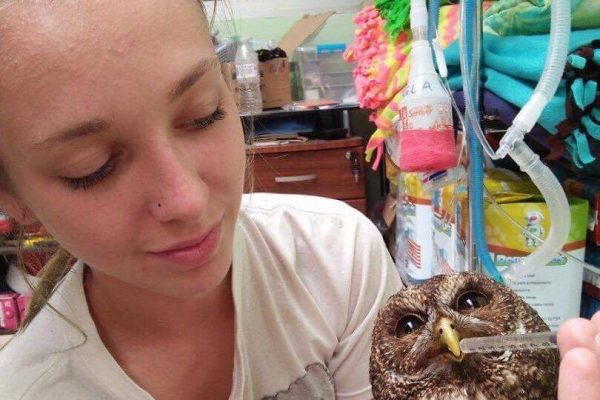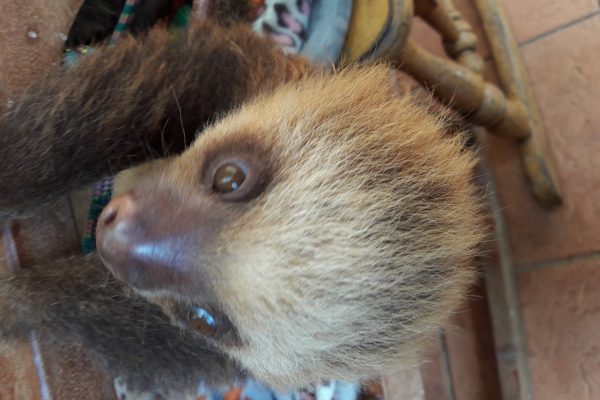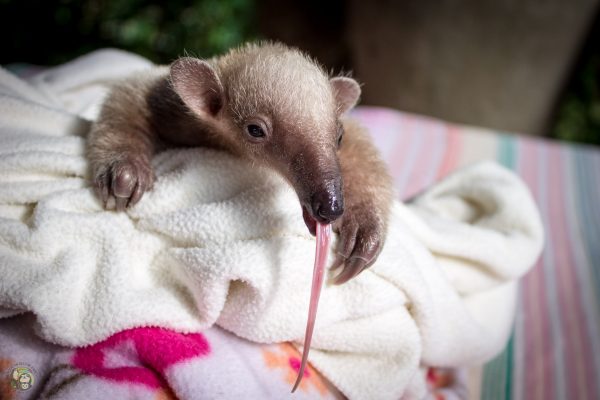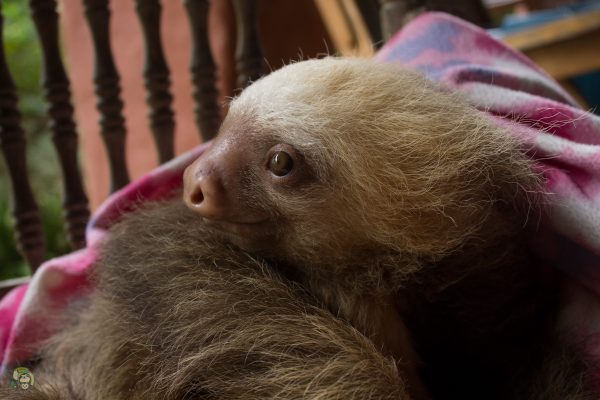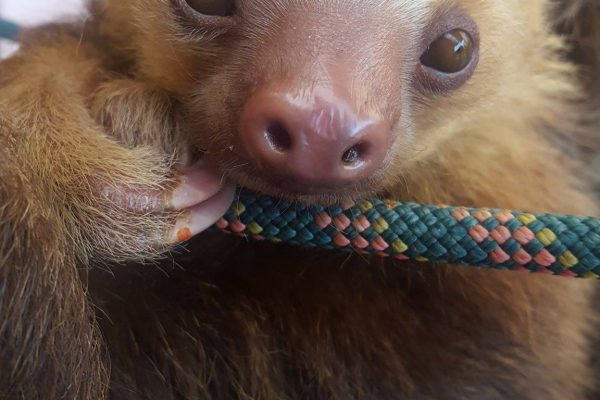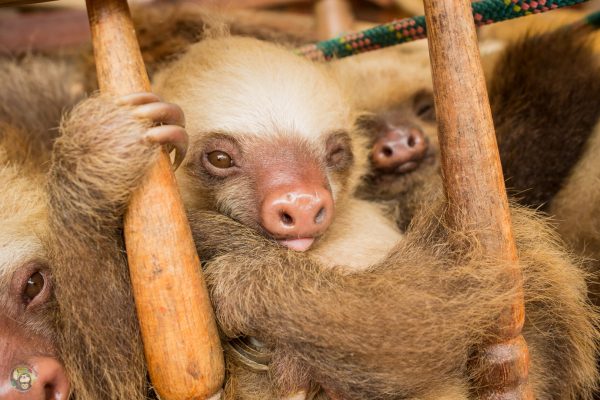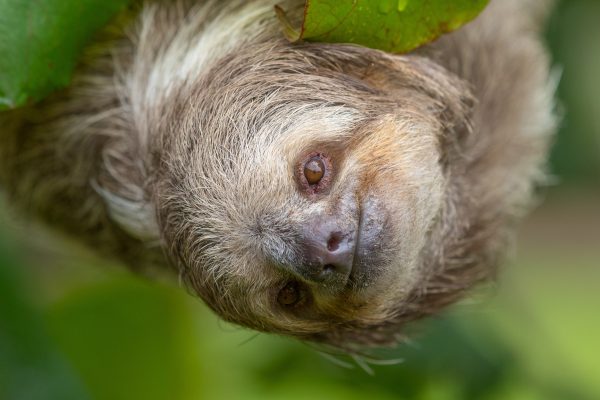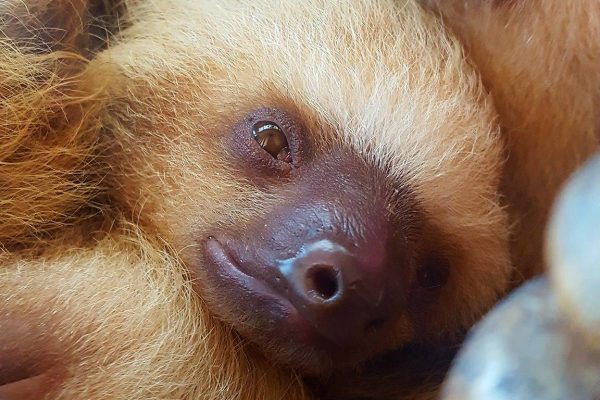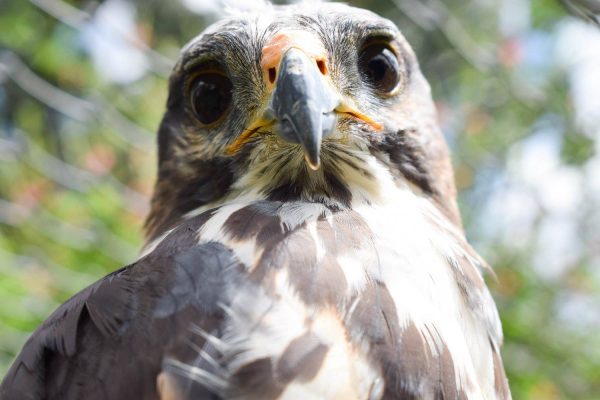-
TRR Inspired Me to Become a Vet Tech
Before coming to Costa Rica I was working a full-time desk job and working towards a psychology degree. I had considered changing my degree to something geared toward wildlife rehabilitation but I didn't want to make such a drastic decision without first dipping my toes in the water. I came to the Toucan Rescue Ranch (TRR) in July, 2016, with a plane ticket to go home exactly 30 days later. That changed about a week into my visit. I immediately fell in love with the ranch and knew that I wanted to stay and contribute here for as long as possible. Spending everyday with these animals gave me something that I had never felt before. After speaking with some of the veterinarian volunteers, I decided it was time for me to make the change and work towards a degree focused on saving animal lives. TRR has completely inspired and motivated me. The best part about it all is that I get to continue working for the ranch while going to school. The experiences and practice that I see daily at TRR have helped me tremendously in my studies. By intern Mackenzie King | Read these types of articles first on our newsletter! Subscribe today!
Continue reading -
The Sloth Journals
Lenny, Male Two-Fingered Sloth Age: ~ 10 months Place of Origin: TilaránCurrent Weight: 1.6 kg (he probably hadn’t gone to the bathroom yet)Nickname: Toffee Jr.Special Talents: Holding his bladder Level of Fluffiness: 8/10 Lenny is the second-most fluffy baby sloth in the group. At first, it may appear that he is jealous of Toffee’s fluffiness, but he’s really just enjoying his Level 8 status. Unlike Toffee, Lenny has an entirely different superpower- holding his bladder for extended periods of time. As the days pass, Lenny’s belly expands in size with each meal until he sports an impressive sumo wrestler stomach. When the time is right, Lenny will unload a mighty… well, we can spare you the details. As with Toffee, sloth nannies must not be tempted to cuddle the exceptionally fluffy Lenny. Fortunately, Lenny is not terribly fond of being picked up, and will remind anyone that attempts to handle him with a not-so-friendly bite. Happy #SlothSunday! You can adopt sloths like Lenny by going to our ADOPTION page and symbolically adopting him! Written by intern Ana Maria Villada | Read more stories like this on our newsletter!
Continue reading -
Tiger Lily the Lesser Anteater
The Lesser anteater or Tamandua (Tamandua Mexicana): Anteaters are very curious and tend to cover very long distances looking for food. Their technique is simple- sniff around to find food, attack the nest, tree or any bug filled substrate, with their claws, make a hole big enough for the tongue to fit and go to town on the bug buffet. The initial assault takes the insects by surprise, but they quickly mount their defense and start protecting themselves. The thick coat of the anteater helps keep them safe for a bit, but soon, they are overwhelmed and must move on. The process immediately starts all over again as there’s no time to rest when you need to eat 9,000 insects a day. To achieve this goal, they will hit from 50 to 90 nests. They move in a straight line to ensure they attack new nests and catch the bugs by surprise. The long distances that they have to cover put them at risk since we humans tent to build roads everywhere, thereby segmenting their territories. Crossing a road is probably the deadliest activity an anteater attempts. If they’re lucky, they can cross quickly to the other side without any interruptions. If they’re not and they see a car coming, they will panic. Sadly, these animals are far too brave for their own good and will try to fight the oncoming car. White with a colored vest, anteaters are the most elegant of the bug-eating animals that we care for. And Tiger Lily, named after the princess from Peter Pan, piles on immense amounts of cuteness to her elegance. She came to the rescue center when she was a tiny baby. We don’t know exactly what happened to her mom, but she was an orphan near a road and needed help. She was a feisty anteater and refused to eat. Little by little, we gain her trust and now she loves milk so much that she practically bathes in it. Lily is less than a year old and is following a successful program that we have implemented before. First comes the milk. Then we spice it up with insectivore (food for bug-eating birds) then we add some termites to the milk. Next, we introduce a termite nest and if she passes this test, then she can go to a tree to find her own food. This, of course, would be the ideal way to do it, but when working with wildlife, ideal is synonym with, “in your dreams. Now we have an anteater that is a great climber, loves fruit and milk, but won’t touch a bug. Maybe she’s vegetarian, some suggest. She’s about seven-months old and our plan is to release when she’s one-year old, so the clock is ticking and we will be working non-stop to make sure she can live up to her species name. By Biologist Pedro Montero Castro
Continue reading -
The Sloth Journals
Latte, Female Two-Fingered Sloth Age: 2-years, 4-monthsPlace of Origin: GuapilesCurrent Weight: 3.2 kgNicknames: Gretchen, MothershipSpecial Abilities: Cuddling with babies, transporting sloths between planets Latte is an adult surrogate mother to the Ranch’s baby sloths, a fact made evident by her significantly larger mass when sitting among her foster children. While unfortunately not releasable due to health-related factors, Latte serves as an important security blanket to the younger babies. Latte’s maternal instincts were discovered after Chispa (who had arrived to the Ranch with her mother) became orphaned after her mother passed from a seizure, devastating the hapless baby. Around the same time, Latte had lost her companion Mocha. Hoping to calm the heartbroken sloths, Chispa and Latte were paired together. To their caretakers’ joy, Latte reached out to Chispa and drew the distraught baby close to her body for comfort. Since then, Latte’s role as mother sloth has been set in stone. Oftentimes, many of the babies shamelessly pile onto Latte, even occasionally obscuring her from view. Even while taking leisurely strolls along the bamboo-climbing frame, Latte will sometimes have a baby or two in tow. While Latte may stick out among her tiny companions, the role she plays at the Ranch has been hugely significant for any distressed baby. Happy #SlothSunday! By sloth nanny and intern Mitch Deskovick | You can learn more about updates like this by subscribing to our newsletter!
Continue reading -
The Sloth Journals
Bowie, Male Two-Fingered Sloth Age: At least 9-monthsPlace of Origin: SarapiquíCurrent Weight: 1.2 kgNickname: BowieSpecial Abilities: Snuggling with Latte As one of the younger sloths, Bowie seeks comfort from the snuggly warmth of Latte, with whom he is almost always cuddling. Like Ringo, Bowie enjoys hitching a ride on Latte during her occasional romps on the climbing frame- sometimes even double-teaming the poor surrogate mother with their combined weight. Curious in nature, Bowie enjoys grabbing onto his unsuspecting caretakers while delivering his signature “blank stare”. Previously, Bowie had a fairly aggressive temperament and would approach innocent bystanders with a swipe, a hiss or a bite. Once removed from the rest of the gang however, Bowie will whine and pout until he is reunited with mommy. Thankfully, Bowie’s tough-guy façade seems to have come to an end (possibly after Latte had a talk with him about loving your neighbor). Since then, Bowie keeps his feisty habits to a minimum but will still complain if separated from the coziness of the chairs. Happy #SlothSunday and you can symbolically adopt your favorite sloth by visiting our Adoption Program! By intern Mitch Deskovick
Continue reading -
The Sloth Journals
Chispa, Female Two-Fingered Sloth Age: 1-year, 3-monthsPlace of Origin: TortugueroCurrent Weight: 1.4 kg Nickname: Cheese PuffSpecial Talents: Sticking her tongue out and perhaps teleportation The only girl of the high school kids, Chispa (and definitely not Cheese Puff, as some people have confused her name for) sticks out among the babies with her… tongue, which can often be seen poking out of her ever-so-slightly agape mouth. Perhaps Chispa’s most noticeable facial feature, however, is her left eye, which is almost completely shut. After her mother fell out of a tree and landed on concrete, Chispa sustained a blinding eye injury. Despite this handicap, Chispa is one of the most independent sloths of the bunch. As a silent underdog of sorts, Chispa often picks off food that the other babies are yet to notice, and has occasionally been seen sleeping alone hanging upside down a lá wild sloth. Chispa has also gotten into her share of precarious situations. One day, Chispa was found clinging onto a light fixture high up on the ceiling of Leslie’s porch all by her lonesome. It’s likely that she climbed from the safety of the sloth rocking chairs and made her way up to the ceiling using a variety of objects (ropes stretching across the porch, a broom leaning against a pillar, low hanging cables, etc.). This goes to show that despite whatever handicap an animal patient at the Ranch may have, they still have a chance at release into the wild, and Chispa has proven to be no exception. There is also the slim possibility that Chispa is secretly capable of teleportation, though this is yet to be witnessed firsthand. Happy #SlothSunday! By intern and sloth nanny Mitch Deskovick | You can read more about TRR updates on our newsletter!
Continue reading -
A Sloth in Heat
Female three-fingered sloths come into estrous, or heat, multiple times a year and boy, do they like to scream about it! When a female sloth is "in heat" and ready to breed she doesn't wait for the males to come to her, she actively encourages them with high-pitched screams. The males will then follow the sound of the screams until he finds her. However, if multiple suitors find her, they may fight each other until the strongest male wins the right to mate. Once decided, the female will let the male approach. In a matter of minutes, intercourse is finished. In some cases, a pair has been found to stay together in the same tree for a few days, sometimes mating again. In others, the male has left shortly after fulfilling his role. Both genders are promiscuous and are likely to mate again. The female three-fingered sloth's pregnancy will last 6-7 months (for two-fingered it is 10-11 months!) and typically only one baby is born, although on some occasions, twins have been reported. Not a lot is known about the courting and reproduction of sloths as it has only been recorded on rare occasions. Recently, our resident three-fingered sloth, Bella, was in heat and we were lucky enough to witness her mating calls, although we're not sure the neighbors would share the sentiment. By former intern Katie Grant | Read more articles like this one by subscribing to our newsletter!
Continue reading -
The Sloth Journals
Ringo, Male Two-Fingered Sloth Age: At least 7 monthsCurrent Weight: 1.1 kgPlace of Origin: PuriscalNicknames: Sonic, Wristwatch, SnifflesSpecial Talents: Clinging to his caretakers, casually doing the splits Ringo is one of the youngest sloths in the high school group. He frequently hangs on to Latte while happily watching over the other sloths as she navigates through the climbing frame. As a youngster, Ringo used to be scared of everything, nervously sniffling when isolated from his larger friends or when being picked up by one of the nannies. In fact, Ringo’s caretakers can attach him onto any part of their body and walk around as if baby sloths were the latest fashion accessory. Now, Ringo’s caretakers speculate that he may be going through sloth puberty. Ringo seems to regularly pick fights with the other sloth kids on the chairs, biting whoever dares to wake him up or steal his spot on Latte. Ringo may not be the biggest of the high school kids, but his resemblance to a hedgehog could land him a gig digging around in soil looking for earthworms. You can symbolically adopt Ringo and his pals by visiting our Adoption Program! Happy #SlothSunday! By intern Ana Maria
Continue reading -
Emma’s New Playground
Do you remember when we were fundraising for Emma the Otter? We had big dreams to build her a large otter habitat where she could swim, fish and run. Well, thanks to many generous donations, we finally have an otter aquarium right in the heart of the Toucan Rescue Ranch. All the staff and volunteers have been patiently waiting as construction started in early February. Now the pool is in its last stages before Emma will be able to go otterly crazy in her new home! The Toucan Rescue Ranch hopes that one day other otters who need rescue can join Emma in her habitat. Not only does she have more space, but she now will have the opportunity to receive more enrichment such as live fish to hunt and eat! We would like to thank all of those who donated, shared and supported Emma as we raised funds for her new home. Projects like this wouldn’t be possible without the continuous support of people like you. You can view Emma's crowdfunding campaign here! For more updates about Emma, follow our Facebook page!
Continue reading -
A Grey Hawk’s Journey
A Grey Hawk's Journey When I came to the Ranch in July, there was a particularly special animal that immediately stole my heart. It was a grey hawk that was brought to us as a juvenile. His wings had been clipped. Someone tried to keep this incredible raptor as a pet and robbed him of the opportunity to grow in the wild. When he first arrived we placed him in a smaller enclosure while waiting for our soft-release enclosure to become available. When we noticed that he was displaying all the signs of progression, we knew he was a release candidate! He was hunting, mantling over his food and calling to other birds in the sky. When we moved him to our pre-release enclosure, it was a very special day. Without hesitation, he flew to the back of the enclosure and perched on the highest beam. There were days that I would check on him to find that he had captured his own live prey, prey that I hadn't introduced to his enclosure. His amazing hunting abilities even gained him the nickname of "Killer" amongst a few of the volunteers at TRR. Watching his progression and aiding in his rehabilitation has been one of the most rewarding and gratifying experiences I've had since coming to Costa Rica. He was released on March 25, 2017 in Cartago, Costa Rica! You can watch the hawk's release on our YouTube channel! By Intern Mackenzie King | You can read updates like this one by subscribing to our monthly newsletter!
Continue reading


